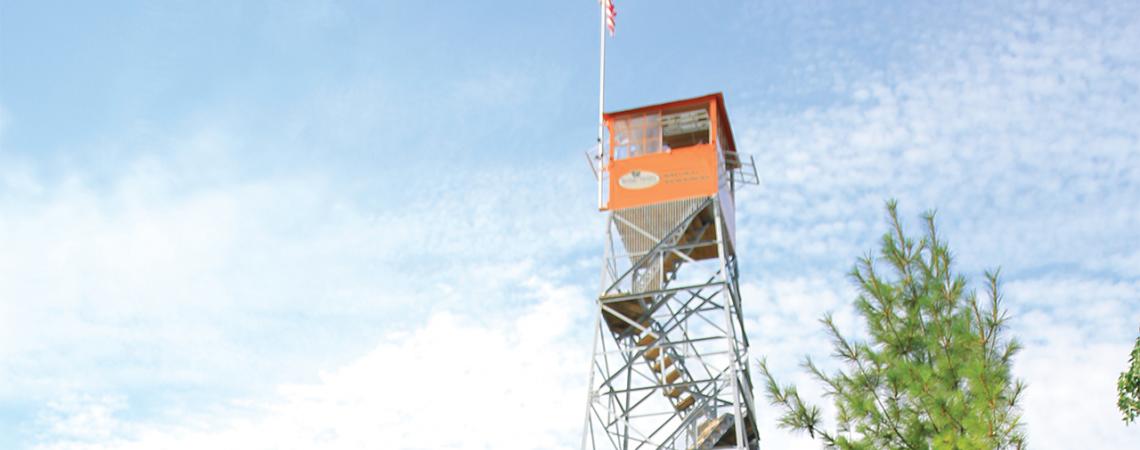Fire tower at the Ohio State Fair (Photo courtesy of Ohio DNR)
Our present days are an amalgam of all of our yesterdays: the past is prelude. That adage couldn’t be more true with respect to Ohio’s geologic history. Nearly the entire state felt the cold crush of mile-deep glacial ice pushing on the land.
The evidence is all around you in the moraines, the low long ridges in southwest Ohio; the grooves etched in stone on Kelleys Island; the open, pleasant till plains seemingly laid flat as a skillet.
Only southeast Ohio was spared the press of ice. It’s a province entirely different from the rest of the state, expressed in the people and the places they inhabit. This Appalachian piedmont bounds in hill after hill. Relative vast reaches of woods — forests of white pine, black oak, red maple, sweet gum, hickory, and buckeye — adorn those hills. They are a natural commodity worthy of protection.
That protection began with a network of some 39 fire towers that once studded the highest of hills. The towers afforded the broadest, longest views by fire watchers who kept a lookout for “smokes,” those first plumes that signaled a potential forest fire.
According to Don Karas with the Ohio Department of Natural Resources (ODNR), Division of Forestry, the towers arose in the 1920s from a need for wildland fire suppression. Ohio’s southeast forests were recovering then, regrowing from having been harvested for charcoal used in iron production in the mid-to-late 19th century.
President Franklin Roosevelt’s New Deal “alphabet soup agencies” would come into play in forest conservation in Ohio. The federal government’s Resettlement Administration facilitated the removal of families off of small, failed farms where folks were scratching out a living in hollows. Those condemned lands came back into the public domain, today managed by the ODNR or the U.S. Forest Service’s Wayne National Forest. Part of the growing conservation concern then was detection and suppressing of wildfires.
Roosevelt deployed his “Tree Army” to the piedmont. That army was the Civil Conservation Corps (CCC), the first of Roosevelt’s New Deal agencies intended to help jump-start the failing economy. The CCC put young men to work in public-works projects across the country.
“Not only did they plant trees, but they built roads and lodges and bridges,” Karas says. “In an 18-month period between 1933 and 1934, the CCC built 11 steel-frame fire towers in southeast Ohio.” They constructed another eight from 1934 until the CCC was disbanded in 1942.

But the rise of airplanes and other technology eventually supplanted the need for towers. Since it was cheaper to fly predetermined routes over the forests on the watch for smoke than to maintain and staff towers, the ODNR opted for aerial surveys during fire season. The last of the firewatchers, Marion Sanders, walked out of a Pike County fire tower for the last time in 1978, and over time, the towers fell into disrepair.
Fortunately, some have been saved, preserved, and even relocated for public viewing; the Armintrout tower is on permanent display in the ODNR area of the state fairgrounds.
“Fire towers, though we don’t need them any longer, are our symbol of forest conservation,” Karas says. “We took great care in preserving this one for all Ohioans to see.”
In all, eight of the fire towers have been preserved, and at least one other restoration project is in the works. David White of Lancaster, a member of the Forest Fire Lookout Association, leads an endeavor to relocate the Rock Bridge/Sugar Grove tower to Charles Alley Nature Park in Lancaster. It’s a labor of love, says White, a former park ranger and wildfire fighter. “Towers are part of our history,” he says. “We need to preserve them for education and our heritage.”
Craig Springer came of age on the glacial moraines in Butler County. Visit him at www.craigspringer.com.









